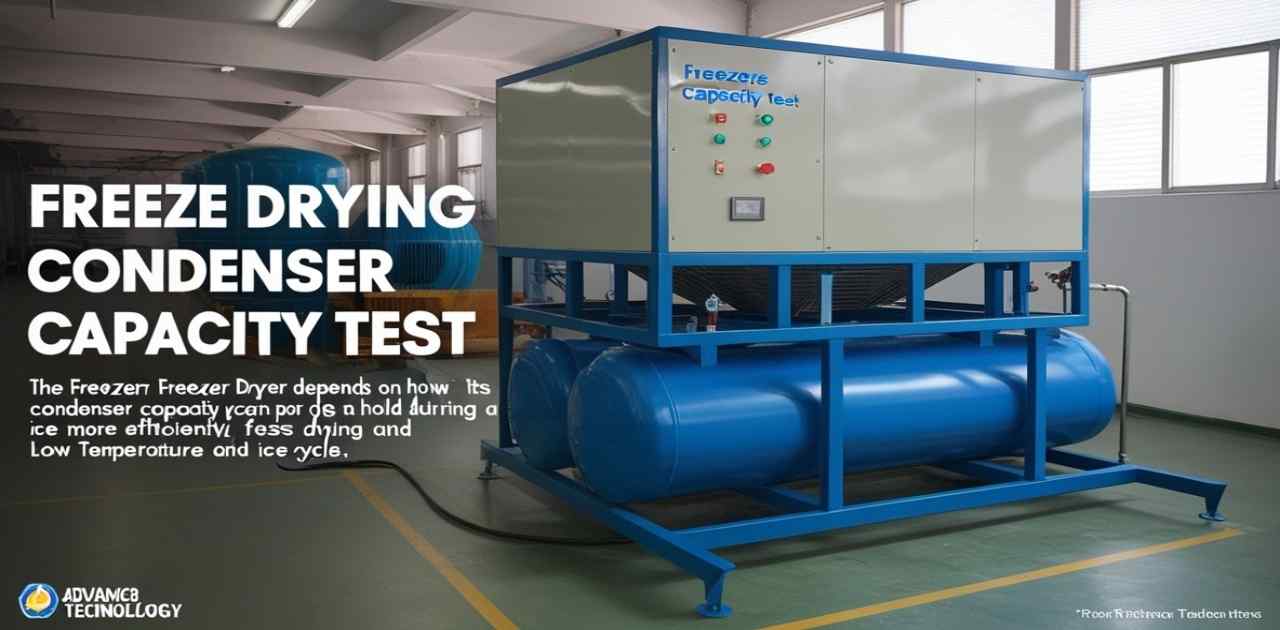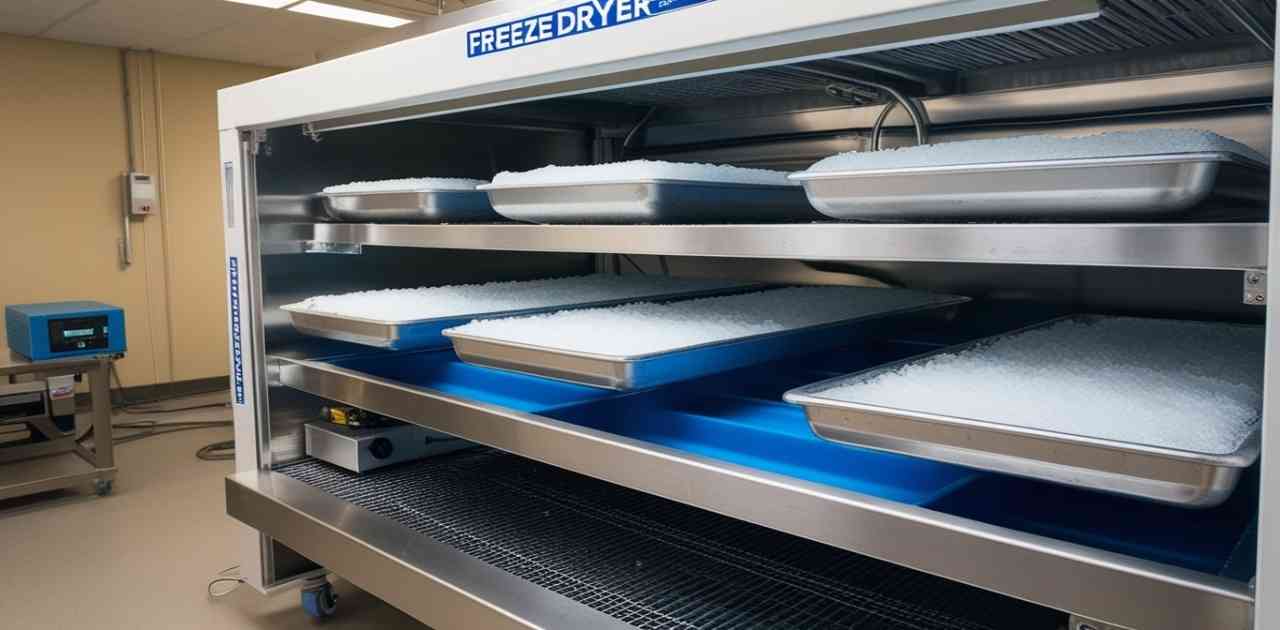The Freeze Dryer Condenser Capacity Test is a crucial procedure to evaluate the maximum ice-holding capacity of a freeze dryer’s condenser over a 24-hour drying cycle. The efficiency of the condenser plays a vital role in determining the overall performance of the freeze dryer. A larger condenser surface area ensures faster vapor conversion into ice, minimizes the need for de-icing, and maintains stable low temperatures, leading to optimal drying conditions. This test is designed to ensure the condenser meets specific acceptance criteria, enabling effective and reliable freeze-drying operations. For more insights into lyophilization processes, explore our Lyophilization Cycle Development Guide.
Purpose: The purpose is to check the maximum condenser capacity of the freeze dryer The size of a freezer dryer depends on how much ice its condenser can hold during a 24-hour drying cycle. A larger condenser surface area converts vapor into ice more efficiently. This leads to faster drying, less need for de-icing, and more stable low temperatures.
Acceptance criteria:
The storage capacity of the ice is > greater than 400 kg; a test will be performed with vials, with parameters to be adapted accordingly; this vials are free of water
The storage capacity of the ice is ≥400 kg in 24 hours at 0.4 milibar, and with a set temperature on the shelves during primary drying of 15.0 °C, the tray or vials are free of water. To ensure compliance with cGMP guidelines during freeze-drying processes, refer to our comprehensive cGMP Guidelines for Lyophilized Product Manufacturing.
To test a freeze dryer’s condenser capacity:
- Fill trays with water: Add about 4 cm of water to trays on all shelves, or up to the condenser’s limit. Note how much water you add to each shelf.
- Freeze the water: Set the shelf temperature to between −40°C and −50°C to freeze the water.
- Evacuate the system: Lower the pressure by setting a vacuum level, like 5 mTorr.
- Wait for pressure to stabilize: Allow 30 minutes for the chamber pressure to settle.
- Raise the shelf temperature: Gradually increase the temperature by 20°C steps until you reach the highest setting.
- Stabilize at each step: Wait 60 minutes at each temperature setting.
- Collect data: Track and record the condenser temperature, pressure levels in the chamber and condenser, and any product temperature changes. For detailed troubleshooting, visit our Freeze Dryer Troubleshooting Guide.
Summary
The Freeze Dryer Condenser Capacity Test assesses whether the condenser can store a minimum of 400 kg of ice within a 24-hour period under controlled conditions. The test involves using water-filled trays to simulate ice formation, freezing the water at temperatures between −40°C and −50°C, and gradually increasing the temperature in 20°C increments to evaluate condenser performance. Key data points, such as condenser temperature, pressure levels, and product temperature, are recorded at each step to monitor system stability. The acceptance criteria require the condenser to hold 400 kg of ice at 0.4 mbar with a shelf temperature of 15.0°C during primary drying. Learn more about proper validation techniques by reading our guide on Lyophilization Validation Best Practices.
Conclusion
The Freeze Dryer Condenser Capacity Test is essential for verifying the efficiency and reliability of freeze dryers. By ensuring the condenser meets the 400 kg ice-holding capacity under specified conditions, the test confirms the equipment’s ability to support demanding freeze-drying processes. Proper execution of this test guarantees optimal performance, enhances drying efficiency, and minimizes operational disruptions caused by condenser limitations. Regular capacity testing is key to maintaining high standards in freezing operations. To further optimize freeze-drying performance, review our Process Performance Qualification Guide.
FAQs
1. What is the purpose of the Freeze Drying Condenser Capacity Test?
The test evaluates the maximum ice-holding capacity of a freeze dryer’s condenser to ensure it meets operational requirements and maintains efficiency during freeze-drying cycles.
2. What are the acceptance criteria for this test?
The condenser must store ≥400 kg of ice within 24 hours at a pressure of 0.4 mbar, with the shelves set to a temperature of 15.0°C during primary drying.
3. What steps are involved in conducting the test?
Key steps include:
- Filling trays with water.
- Freezing the water at −40°C to −50°C.
- Evacuating the system to a vacuum level of 5 mTorr.
- Stabilizing pressure for 30 minutes.
- Gradually raising shelf temperatures in 20°C increments.
- Collecting and recording system performance data.
4. Why is it important to test the condenser’s capacity?
The condenser’s capacity determines the freezer’s efficiency. Ensuring it can handle the required ice load prevents de-icing interruptions and supports stable, consistent freeze-drying processes.
5. How often should the condenser capacity test be performed?
It is recommended to conduct the test during equipment commissioning, after major maintenance, or as part of regular performance validation schedules to ensure consistent efficiency

